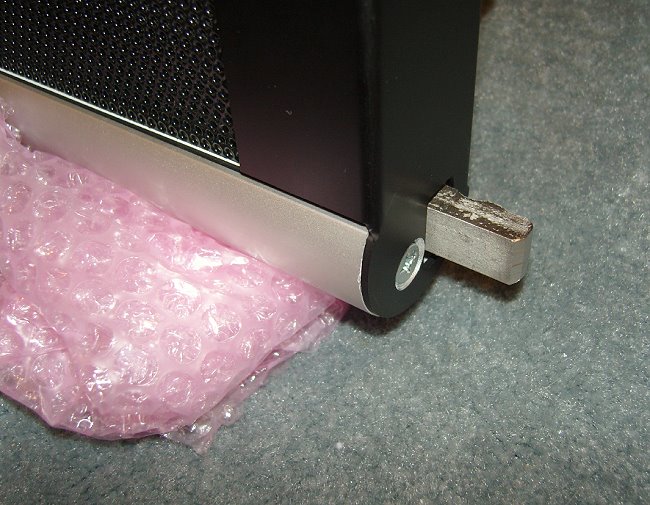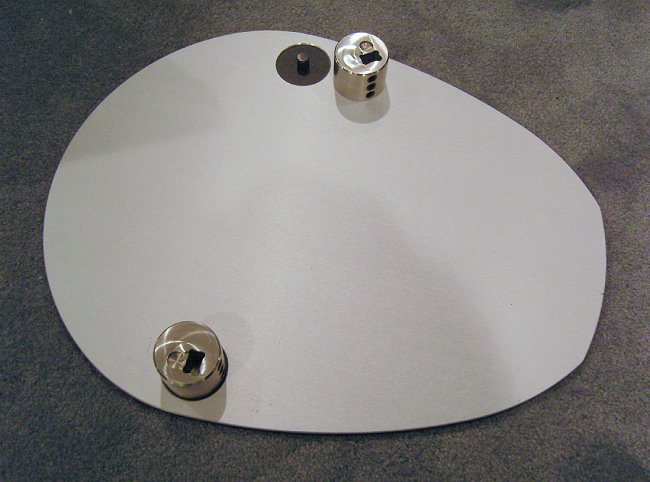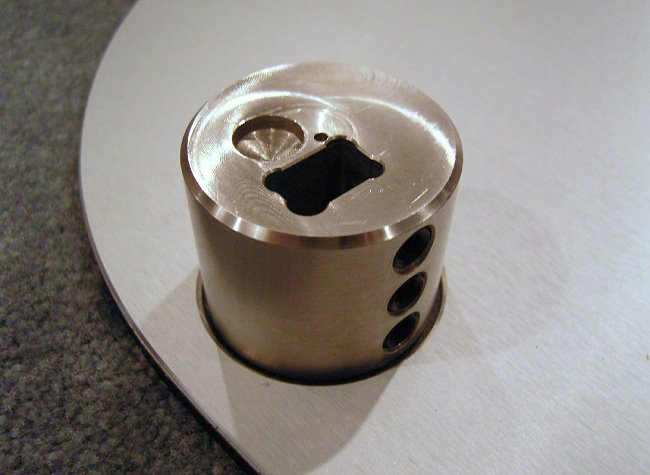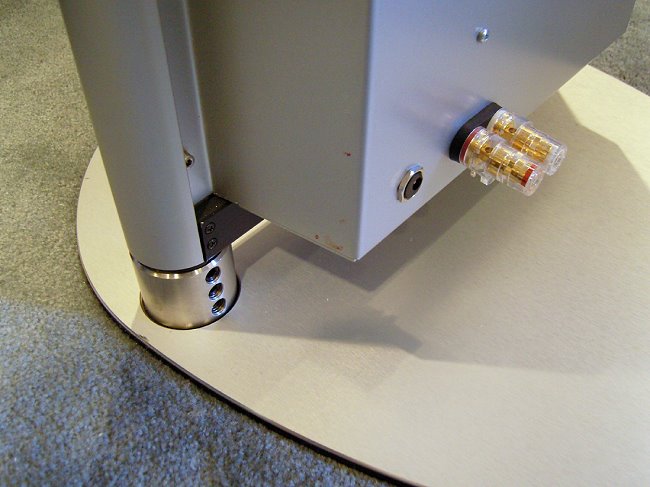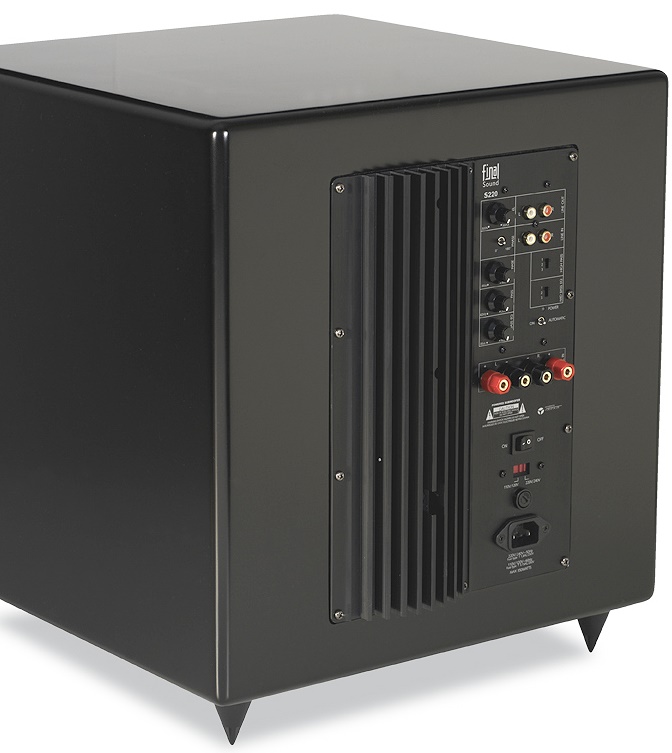|
||||||
|
Assembly Often, with conventional speakers, you might be required to screw on the feet. With the 1000i, you have to assemble the entire base. First, you remove the main panel from its box, and either lay it flat on the floor, or lean it up against a chair, resting on the bubble wrap packing, like I did for this photo. Notice the protruding metal rod at the base.
Next, you have to assemble the base plate, consisting of an oval-shaped plate and two metal cylinders. Place the cylinders on the black posts.
Notice that the cylinders are in pairs for left and right. Identifying which one goes where, you place each so that the rectangular hole is closest to the outside edge of the oval plate, as shown in the photo below. Then, using a hex wrench, tighten the bottom bolt on the rear of the cylinders, but not so tight that the cylinder can't move just a bit.
Now, you pick up the main panel, and set it down over the cylinders so that the metal rods drop down into the rectangular holes. Don't let go of the main panel yet.
Still holding onto the panel with one hand, use the hex wrench to tighten the top two bolts on each cylinder, so that the panel is firmly gripped. Rock it back and forth to make sure everything is tight, then let go of the panel but keep your hand close, to ensure that it is steady. See those little red dots at the bottom of the panel? That's my blood. I scratched myself on the sharp corner on the panel to the right of the cylinder. So, be careful! To the left of the speaker binding posts is the socket for the included 12 volt wall wart which supplies the voltage that will ultimately be applied to the stators. The wall warts have very long cables (thin) so they will reach just about any spot the speakers are placed, and in general, ESLs should be out from any wall surface at least a couple of feet (they are dipoles, and just as much sound comes out the back as out the front). S220 Subwoofer The subwoofer that was paired with the 1000i for review is the S220. It is a 12", 220 watt, sealed enclosure unit.
The amplifier has several controls that you don't see on other subs, mainly slider switches that let you tailor the subwoofer crossover to particular Final Sound ESLs. These include switchable high-pass, and Variable Mid-bass EQ (there is also a different control called Variable Bass EQ). For example, if you have the 1000i, one setting is used, while with smaller units, such as the 400i, a different setting is more suitable (high pass is at higher frequency because the ESL is smaller). A table in the instruction manual explains which settings to use with which Final Sound ESLs. The S220 is not a really big sub, and the idea is that you could get at least two, which would give one for the front left and front right channels. Of course, this would entail some fancy footwork in the processor or receiver bass management setup. You would need to run a pre-out to the sub, then the high-pass line out from the sub back to the pre-in on the processor. This requires that you have a main-out and main-in for the front two channels on the processor or receiver, which some units do have. Otherwise, you have to use the subwoofer-out on the processor, with crossover settings done in the processor. For the 1000i, I used 80 Hz because its frequency response specification is - 3 dB at 38 Hz (I wanted to cross over at a region that was still part of the flat response), and because I wanted the ESL panels not to have to deal with deep bass. Obviously, with higher crossover frequencies, you need to put the sub(s) near the speaker(s) that they are associated with, because above 50 Hz, sound can be localized, and you want all the sound for a particular channel to be coming from the same part of the room.
|
||||||

